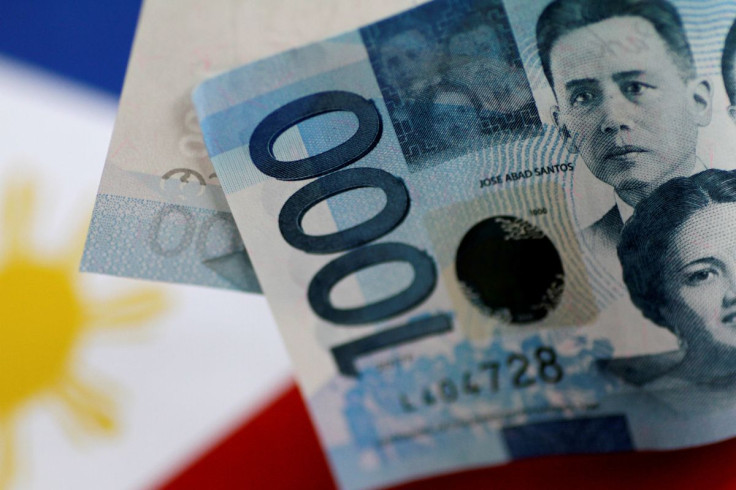Philippine Cenbank's Modest Rate-hike Stance Lifts Bearish Bets On Peso- Reuters Poll

Bearish bets on the Philippine peso grew as the central bank adopted a more modest approach than its peers to tamp down inflation, while short positions on China's yuan eased following more stimulus and easing COVID-19 curbs, a Reuters poll found.
Short bets on the peso were at their highest in at least four years amid worries that the central bank's 25-basis-point hike this month will not help curb inflationary pressures, according to the fortnightly poll of 10 respondents on Thursday.
The pressure has severely dented the peso this year, with the Philippine currency losing almost 7% so far and still hovering near a 16-1/2-year low.
Bangko Sentral ng Pilipinas' incoming governor has indicated the bank may consider bigger rate hikes to support the peso, but said it will not be obliged to match policy tightening by the U.S. Federal Reserve.
The view remains split, however, with analysts at Bank of America suggesting "a gradual rate of tightening may be appropriate as the recovery and re-opening of the economy remains fragile."
Meanwhile, bears in the yuan retreated on hopes that easing COVID-19 restrictions would help fuel an economic recovery. Though the People's Bank of China hinted at accommodative policy, its impact on the unit was expected to be limited.
The central bank also reaffirmed its stance of making the yuan exchange rate more flexible and keeping the currency stable.
Short bets in the Indonesian rupiah rose slightly. Bank Indonesia left rates at a record low last week and stuck to a relatively dovish stance, which analysts fear will lead to weakness in the currency.
Market participants were also downbeat on the Indian rupee, which touched a record low on Wednesday, amid persistent concerns about rapid inflation, higher oil prices, and tepid growth.
Short positions in the rupee were at least four-year high.
Dealers turned slightly more favourable towards Singapore's dollar. The city-state's key consumer price gauge rose in May at its fastest pace in more than a decade and is expected to peak around 4% in the third quarter.
Bearish bets in the South Korean won and the Malaysian ringgit dropped marginally, while those in the Thai baht inched higher.
The Asian currency positioning poll is focused on what analysts and fund managers believe are the current market positions in nine Asian emerging market currencies: the Chinese yuan, South Korean won, Singapore dollar, Indonesian rupiah, Taiwan dollar, Indian rupee, Philippine peso, Malaysian ringgit and the Thai baht.
The poll uses estimates of net long or short positions on a scale of minus 3 to plus 3. A score of plus 3 indicates the market is significantly long U.S. dollars.
The figures include positions held through non-deliverable forwards (NDFs).
The survey findings are provided below (positions in U.S. dollar versus each currency):
DATE USD/C USD/ USD/S USD/I USD/ USD/ USD/ USD/ USD/T
NY KRW GD DR TWD INR MYR PHP HB
30-June-22 1.09 1.69 1.08 1.5 1.15 1.8 1.63 2.05 1.39
16-June-22 1.54 1.79 1.35 1.33 1.23 1.66 1.67 1.7 1.34
02-June-22 1.22 0.56 0.38 0.90 0.73 1.18 1.06 0.59 0.54
19-May-22 1.90 1.55 1.07 1.19 1.63 1.35 1.53 1.15 1.56
05-May-22 1.75 1.50 0.73 0.56 1.49 1.04 1.47 1.09 1.33
21-April-22 0.10 1.07 -0.17 -0.03 0.94 0.75 0.89 1.00 0.71
07-April-22 -0.41 0.99 -0.46 -0.05 0.81 0.63 0.32 0.53 0.31
24-March-22 -0.16 0.98 0.19 0.04 1.16 0.99 0.12 1.40 0.46
(Editing by Sherry Jacob-Phillips)
© Copyright Thomson Reuters 2024. All rights reserved.




















